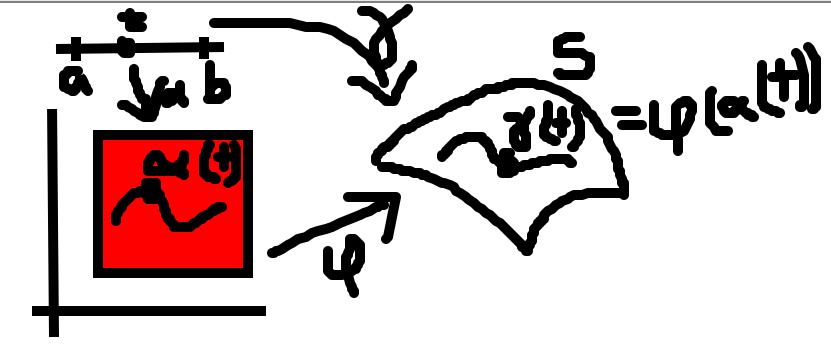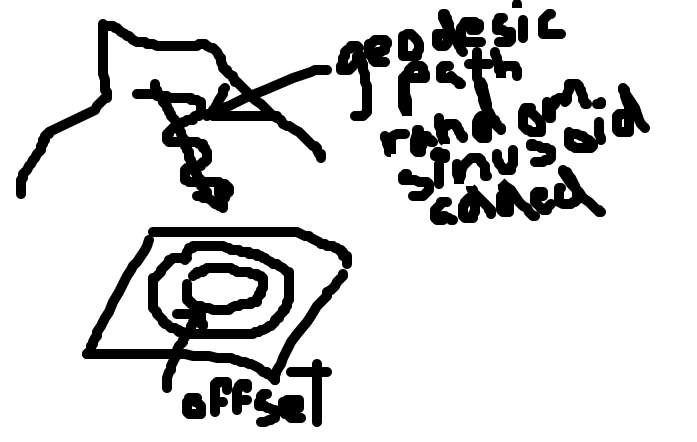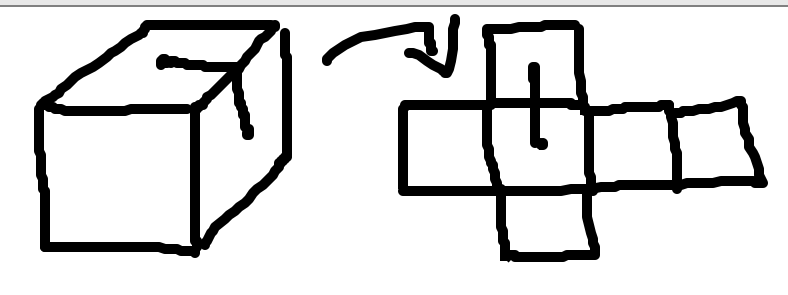










Geodesics
CS216
Chris Pollett
May 4, 2010











CS216
Chris Pollett
May 4, 2010
Geodesics are often given one of a couple different "plain" language definitions:
The Kinematic Definition. A geodesic is a curve traversed by a particle whose acceleration vector at a point lies in the plane spanned by the velocity vector and the normal to the surface at the point. There is no side-to-side acceleration. Any acceleration is used to keep the particle in the surface or to speed it up or slow it down in the direction of the path.
The Static Force Definition. On a convex surface, a curve is called a geodesic if a thread stretched along the path it traces out on the surface is in static equilibrium with respect to any sideways tension on it.

Which of the following statements is true?


We will now look at how to solve this problem when our surfaces and polygonal. That is, described by polygon faces.
Definition. A piecewise linear (pwl) curve `p` in `mathbb{R}^n` is a sequence `(\vec p_0, \ldots, vec p_k)` of points. The length of `p` is the sum of the length `||p_(i+1) - p_(i)||`. The curve is closed if its first and last points are the same, and is simple if all other points are distinct.
Theorem. Let `vec S` be a connected compact polygonal surface. (1) any two points of `vec S` can be connected by a shortest pwl curve. (2) Every shortest pwl curve between two points in `vec S` is simple. (3) There is a `\delta > 0` so that for any two points `vec p` and `vec q` in `vec S` with `|| \vec p - \vec q|| < \delta`, there is a unique shortest pwl curve from `vec p` to `vec q`.
The idea of the proof is that by cutting the polygonal surface along edges, we can flatten it out so that it lies entirely in the plane. Then the theorem follows from shortest distance between points in the plane.
Our problem is: Given two points `vec p` and `vec q` on a polygonal surface, find a shortest pwl curve in `vec S` from `vec p` to `vec q`